
Ingredient
Grape leaves
The Versatile and Flavorful Grape Leaves
Grape leaves are large, heart-shaped leaves that are typically harvested from grapevines. They have a tender yet slightly chewy texture and a mild, slightly tangy flavor. The leaves are often blanched or brined before being used in cooking to soften their texture and remove any bitterness. They are commonly used to wrap and stuff ingredients such as rice, vegetables, and meat.
Origins and history
The use of grape leaves in cooking can be traced back to ancient times. They have been a staple in Mediterranean and Middle Eastern cuisines for centuries. Grape leaves are believed to have originated in the region around the Black Sea and were spread throughout the Mediterranean by the ancient Greeks and Romans. Today, they are widely used in dishes such as dolmas, sarma, and yaprak.
Nutritional information
Grape leaves are low in calories and a good source of vitamins A and K. They also contain antioxidants and are believed to have anti-inflammatory properties.
Allergens
There are no known allergens associated with grape leaves.
How to select
When selecting grape leaves, look for ones that are fresh and vibrant in color. Avoid leaves that are wilted, discolored, or have holes. If purchasing jarred or canned grape leaves, check the expiration date and ensure they are packed in a brine or vinegar solution to preserve their quality.
Storage recommendations
To maintain the freshness of grape leaves, store them in the refrigerator in their original packaging or in a sealed container. If using jarred or canned grape leaves, store them in the refrigerator after opening and use within a few weeks. If you have an abundance of fresh grape leaves, they can be blanched and frozen for future use.
How to produce
Grapevines can be grown in a variety of climates, but they thrive in temperate regions with well-drained soil and full sun exposure. Amateur gardeners can start by purchasing grapevine cuttings or potted plants from a nursery and following proper planting and care instructions.
Preparation tips
Grape leaves are commonly used to make dolmas, a popular dish in Mediterranean and Middle Eastern cuisines. They are also used to wrap and stuff vegetables such as peppers, zucchini, and eggplant. Additionally, grape leaves can be used as a decorative element in salads or as a wrapper for grilling fish or meat.
Culinary uses
Grape leaves are widely used in Mediterranean and Middle Eastern cuisines. They are a key ingredient in dishes such as dolmas, sarma, and yaprak. They are also used in Greek cuisine to make spanakopita, a savory pastry filled with spinach and feta cheese.
Availability
Grape leaves are commonly available in countries with a Mediterranean climate, including Greece, Turkey, Lebanon, and Italy. They can also be found in Middle Eastern and North African countries.
More ingredients from this category
Recipes using Grape leaves » Browse all

Cochinita Pibil - Bosnian Style
Bosnian-Inspired Slow-Roasted Pork with Aromatic Spices
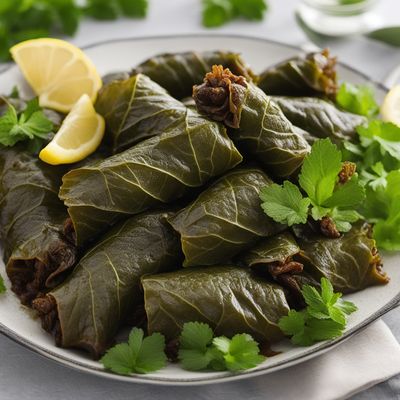
Armenian Stuffed Grape Leaves
Savory Delights: Armenian Dolma - A Burst of Flavor Wrapped in Grape Leaves
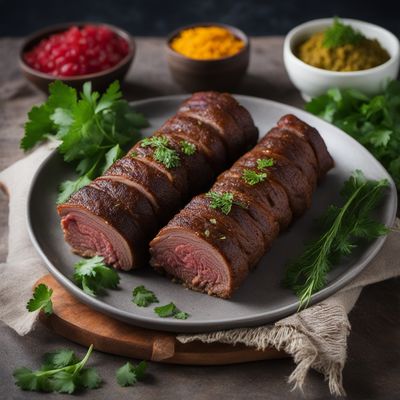
Bukharan Jewish-style Stuffed Beef Rolls
Savory Beef Delights: Bukharan Jewish Stuffed Beef Rolls
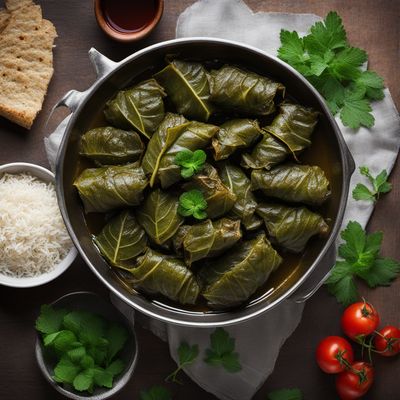
Armenian Stuffed Grape Leaves
Savory Delights: Armenian Stuffed Grape Leaves

Sarma with a Twist
Flavorful Stuffed Rolls: A Fusion of Turkish and Specific Styles Cuisine
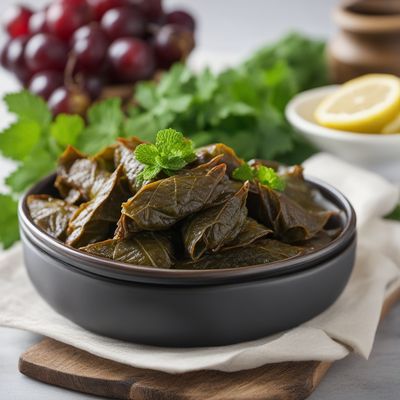
Albanian Stuffed Grape Leaves
Savory Delights: Albanian Stuffed Grape Leaves - A Taste of Mediterranean Comfort

Cochinita Pibil - Spanish Style
Sabrosa Cochinita Pibil: A Spanish Twist on a Mexican Classic

Armenian Stuffed Grape Leaves
Savory Delights: Armenian Stuffed Grape Leaves
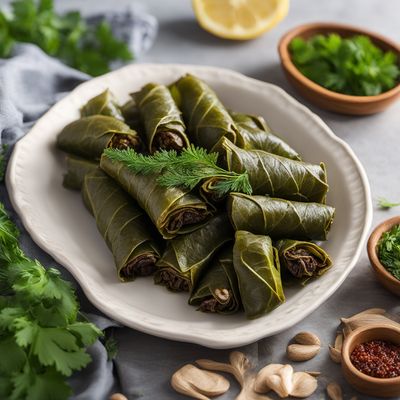
Aromanian Stuffed Grape Leaves
Savory Delights: Aromanian Stuffed Grape Leaves - A Twist of Mediterranean Flavors

Stuffed Grape Leaves with Rice and Herbs
Mediterranean Delight: Fragrant Stuffed Grape Leaves
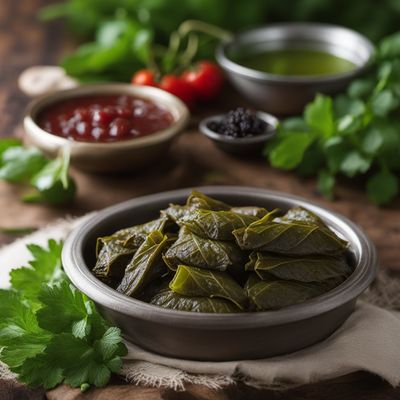
Armenian Stuffed Grape Leaves
Savory Delights: Armenian Stuffed Grape Leaves

Mexican Stuffed Grape Leaves
Savory Delight: Mexican Stuffed Grape Leaves with a Spicy Twist

